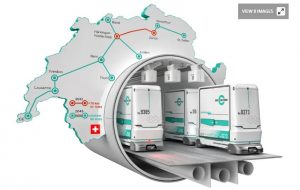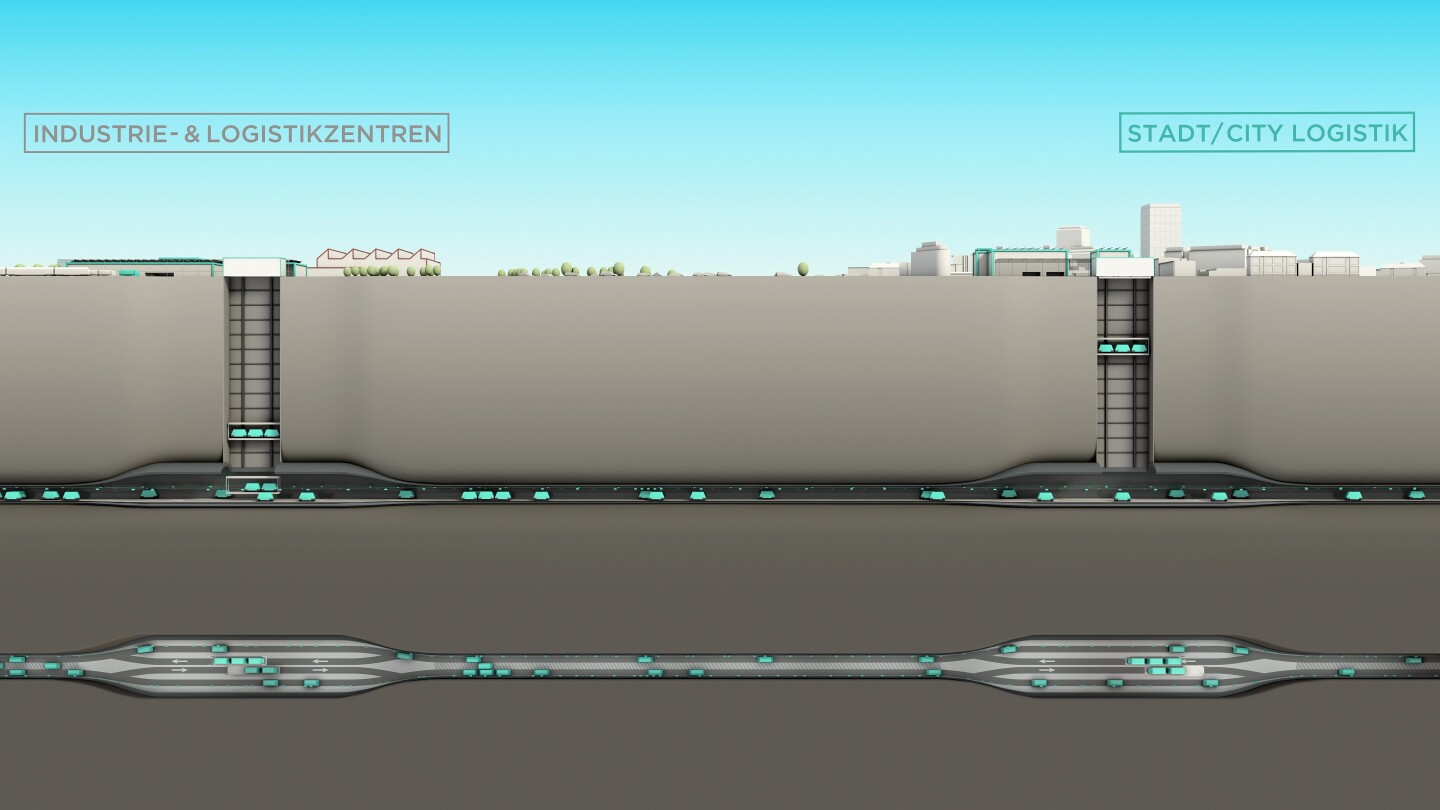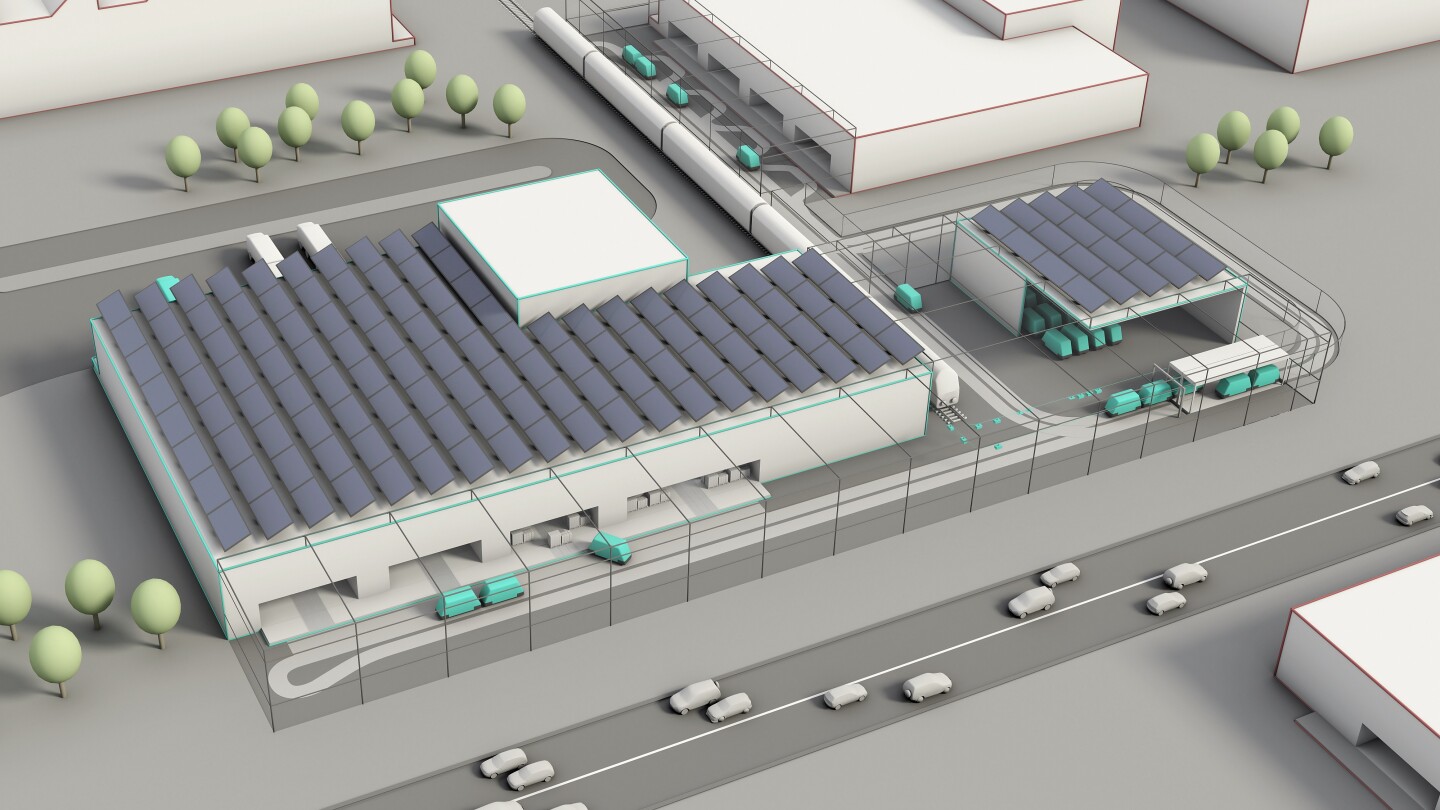Switzerland’s autonomous underground cargo system aims for 2031 debut
A lot less technologically optimistic than the Hyperloop-TT Hyperport project, Cargo Sous Terrain looks considerably more likely to happen, with its first 10-stop, 70-km (43-mile) series of underground tunnels scheduled to begin taking cargo in 2031.
The idea is to develop a fully autonomous, zero-emissions transport system for small cargo loads that can take some strain off a road system that’s projected to be smashed with nearly 40 percent more traffic in 30 years’ time. But where Hyperloop-TT’s project aims to fire entire shipping containers around Europe at transonic 1,220-km/h (760-mph) speeds in ultra-low-drag vacuum tubes, Cargo Sous Terrain (CST) is taking a much more humble and achievable approach.
Each tunnel will have a diameter around 6 m (20 ft), and a flat floor divided into three lanes. Along these lanes, platoons of small cargo pods will travel at speeds around 30 km/h (18.6 mph). These pods will be big enough to hold a pallet or two, and there’ll be refrigerated ones available for fresh produce and the like. They’ll drive themselves with electric motors, and they’ll receive power through induction rails.
Pods will be loaded up at above-ground logistics facilities, then lowered down to on/off-ramp sections of the tunnel system on elevators. The outside lanes of the tunnels will be one-way, while the inside lanes can be dynamically configured to prevent traffic jams if a high number of pods are waiting for a single elevator.
CST estimates that three billion Swiss francs (~US$3.056 billion) will get the first bit built and operational, between Zurich and Härkingen/Niederbipp, and claims “no subsidies are being used in building the infrastructure and operating the tunnel.” Indeed, it seems it’ll be fully privately funded; Switzerland’s Federal Council has ruled out co-financing CST with public funds – but the Swiss government has put new legislation in place to pave the way for the project to happen, and as a result the company now has access to some US$100 million worth of pre-sourced private investment money to get going.
The company is yet to break ground, but has entered the planning permission phase and begun investigating and surveying locations for the first 10 hubs, prioritizing locations that’ll take the maximum traffic off the roads. If all goes to plan, the CST tunnel network will spread out for some 500 km (311 miles) across the country, From Geneva to St. Gallen, with short secondary lines shooting off to Basel, Lucerne and Thun.
Apart from the drop in surface traffic, the CST is designed to make a minimal impact on the daily lives of citizens. It’ll be more or less invisible to the eye, nearly silent, and totally run on renewable energy. The company appears to have no plans for passenger services, a decision which simplifies things greatly. Indeed, it all looks rather sensible and doable.
Check out a short video below.
Source:Switzerland’s autonomous underground cargo system aims for 2031 debut (newatlas.com)




